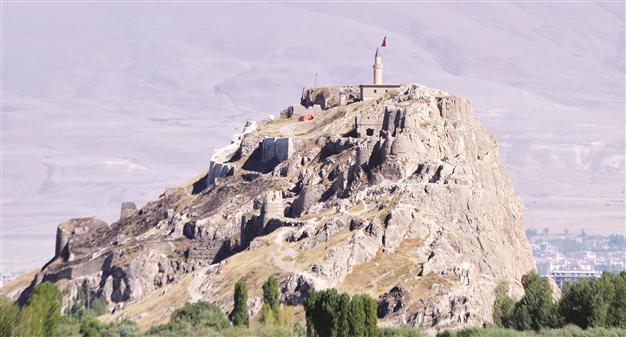Urartu heritage protected
VAN

AA photo
The Van Relief and Monuments Provincial Directorate has applied to the Culture and Tourism Ministry to restore and protect officially ancient inscriptions in Van Castle.
Van Castle is seven kilometers from the city center in the eastern province of Van, which had been the center of the Urartu Kingdom for three centuries. The inscriptions were discovered one by one and documented in a report submitted to the Culture and Tourism Ministry.
Speaking to Anatolia news agency, the Relief and Monuments Provincial Director Cemil Karabayram said the inscriptions, commisioned by the Urartu King Sarduri and depicting his journeys, had been damaged by people as well as attacks and visits over time.
InvestigationHe said the report requested that those who had damaged the tablets be indentified and investigated. He also called for visitors to the castle to be more sensitive and respect the history.
“Visitors have written about their dreams, loves and feelings on the historical tablets, which are very important. They should be identified and punished,” Karabayram said.
He said that if the report is approved, the directorate will have the inscriptions restored. “I hope that history will not forgive these people [who damaged the tablets]. Such people do not have a place in society.”
Van Castle was built in Tushba, the capital of the Uratu state, during the ninth century B.C. and is the largest example of its kind. The castle fell to bands of Assyrians when the Urartus were defeated and fled from the region during the early 7th century B.C. The castle also shows remnants of the Selçuk, Karakoyunlu, Akkoyunlu and Ottoman eras, but the most important sections in the castle are the rock cells and inscriptions of the Urartus. The castle also contains a mosque built by Sultan Süleyman the Magnificent.
The earliest palace structure from the Urartu Kingdom was recently found in excavations at the top of Van Castle. Its architectural structure shows that the palace was built in the early Urartu period. Excavations to uncover other structures continue in the palace and its surroundings.
